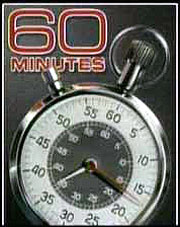CBS's '60 Minutes' spotlights stem cell work
The widely watched television news show, "60 Minutes," heralded the revolutionary healing potential of embryonic stem cells in a Feb. 26 report—the night before a trial that could determine whether $3 billion will become available in California for stem cell research.
Included in the program was an interview with Robert Robbins, MD, chair of Stanford's Department of Cardiothoracic Surgery, discussing the possibility of helping patients recover from heart attacks by rebuilding heart muscle with injections of embryonic stem cells. Robbins and colleagues have done such a procedure in mice with severe cardiac disease and had promising results.
"There's a lot of enthusiasm for this area of research," Robbins told CBS correspondent Ed Bradley. "There's great hope for patients that suffer from heart failure that may be too old or can't get a heart transplant. And a heart transplant is a big operation. You would much prefer having a therapy that you could go out of the hospital with just a Band-Aid on your leg versus having a big operation."
But the show noted that the funding needed to make such therapies a reality was in doubt. The Bush administration has restricted support for research in this field, and while California voters approved a measure—Proposition 71—in November 2004 that would provide $3 billion for scientists to conduct stem cell research, that money has yet to be disbursed because of lawsuits. The trial to resolve those challenges began Feb. 26 in Alameda County Superior Court.
In his "60 Minutes" interview, Robbins showed a petri dish of cells that were pulsating as if they were part of a beating heart. "These are the cells that go to make up the heart muscle cells," he explained. "They all started out as cells from embryos with the potential to develop into any type cell."
It was a vivid demonstration of how scientists hope to be able to manipulate embryonic stem cells to grow into any one of a multitude of human tissues or organs. And it raises the possibility of a day in the future when doctors will be able to cure diseases and heal injuries by regenerating tissues in the body that have been ravaged by disease or accident.
But such developments are not assured and, even in the best-case scenarios, much work remains before they can be used as routine therapies for people. While "60 Minutes" mentioned two potential uses for stem cells that are ready to begin clinical trials—one for replacing nerve cells in people who have suffered spinal cord damage, the other for children stricken with a fatal brain disease—the trials may takes years. And they may uncover serious side effects or show that these therapies are not as effective in humans as they were in laboratory animals.
In the meantime, Robbins noted that he is receiving inquiries from heart patients interested in pursuing stem cell treatment. Yet it's way too soon to think of using such a therapy in humans, he told Bradley. "I would say that it's at least five to 10 years away before I think that we will have enough definitive data in animal studies that it will be safe to go forward with embryonic stem cells [injected into human hearts]," he said.


Share This Story